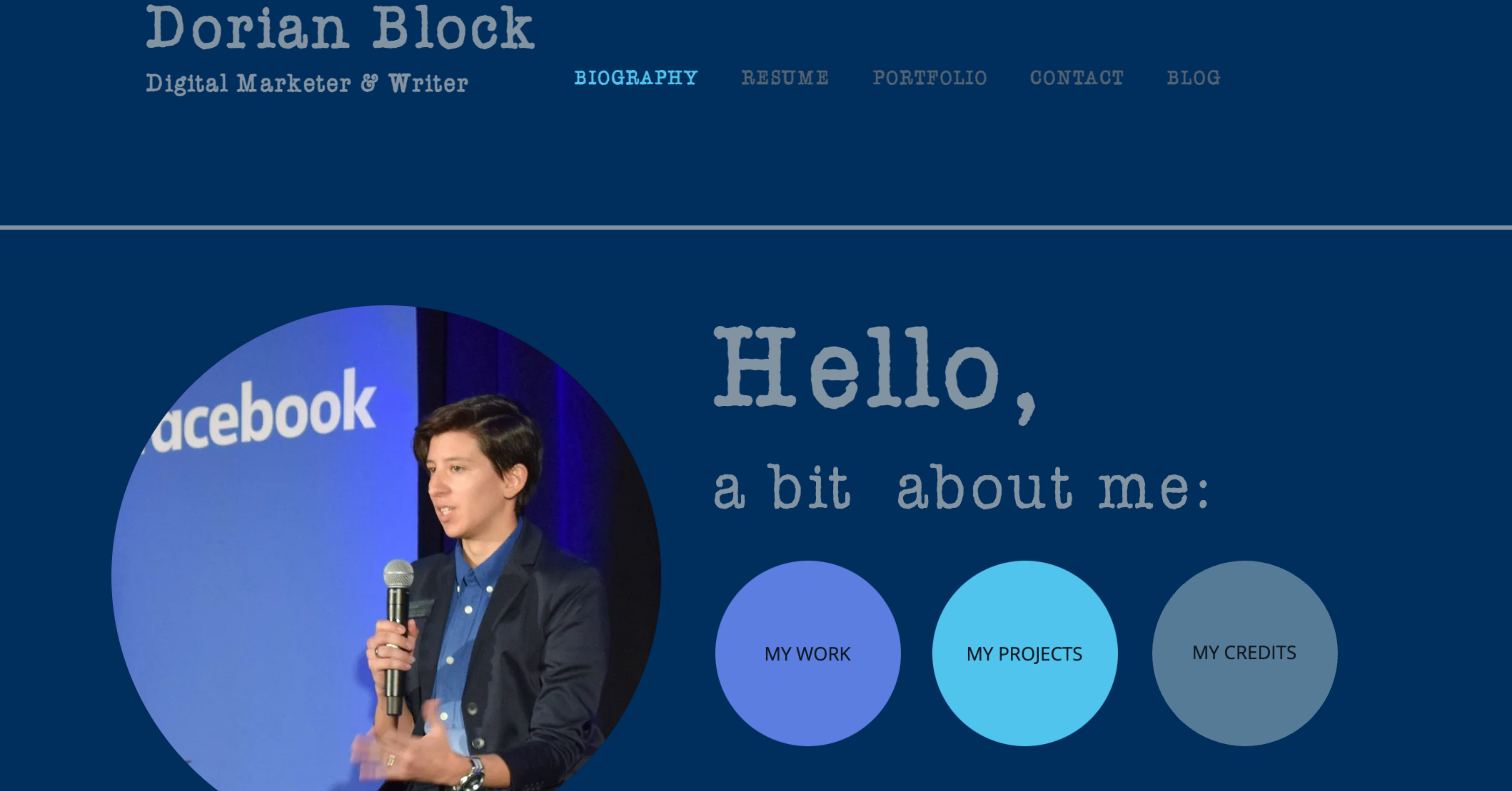Resumes provide employers with an overview of your professional qualifications, but they can only say so much about what you’re capable of doing. If you’re a digital marketing professional looking to transition into this career, we strongly recommend you build a digital marketing portfolio. Showcasing examples of your creative work and the outcomes of your campaigns can help prove your potential to prospective employers and clients.
In this article, we break down how to build a digital marketing portfolio.
Start by choosing a website to host your Digital Marketing portfolio.
Find a portfolio website to organize and showcase your work. Use tools like Squarespace, Wix, Crevado, CarbonMade, or PortfolioBox to create an online gallery of your work. These websites give you room to include short descriptions highlighting the goals of your campaign, the channels you chose, the assets you built, and the impact of your work. Publishing your digital marketing portfolio online also improves your visibility and highlights your professionalism (even if you’re new to the industry).
How should I lay out my Digital Marketing portfolio?
Before we discuss what goes into your digital marketing portfolio, make sure you have taken the time to decide what the look and feel of your site will be. It should be cohesive and stick to one color palette or theme to look professional and well put together. Visitors may scan the page, and studies show you have eight to twelve seconds to capture your audience’s attention. Presenting the analytics behind each campaign is important, but how you display those results is equally as important. Get creative and play with text treatments, visuals, charts, or graphs. If you’re unsure where to start, check out some 2022 web design trends for inspiration.
Make sure the website is easy to navigate. Consider creating a home page and dividing up different projects into categories so that it’s easy to find the types of work you produce. Below is an example of how one of our Pathstream students chose to layout her portfolio:

Include a home page on your digital marketing website.
Including a home page will tie your website together, like the example above. Think of your home page as a table of contents to guide those visiting your website. Here are a few tips to consider when designing this page:
- Ensure content or campaigns are divided into categories (email campaigns, copywriting examples, social media campaigns, etc).
- Include your business name or your name front and center
- Add a headline that sums up what you can do for clients or your business’s mission statement
- Your contact information needs to be visible. Consider adding it to the footer of your website and consider linking your social media there as well.

Don’t forget the About You page.
This page should focus on you and your previous experience. Write a brief paragraph about yourself and add your resume to the page. List any employers or big projects you recently worked on or show off those digital marketing certifications. This page should always include your contact information and link to your social media (if you use it for business purposes). Your contact information should be easy to locate so that potential clients can reach out to you. Here’s a pro tip: embed icons linking to your social media and your contact information in your website footer so that it is always visible.

What should you showcase in your digital marketing portfolio?
A digital marketing portfolio should include visuals of your work, but more importantly, focus on the goals of each project and the tangible results. If you’re just starting out we suggest selecting five (5) to six (6) projects to feature that show off your creativity and quantify the success you achieved.
Each project featured should include images, a description of your campaign and your role, and a summary of the results you achieve. Consider answering the following questions for each project:
- What was/were the goal(s) of the campaign?
- What channel(s) did you use? Why?
- What was your role? (Did you write the copy? Did you develop the strategy behind the campaign? Did you design the creative?)
- What quantifiable results did you produce for your clients? (What were the results of your email campaign? How many leads were generated? How many leads converted? Or how many products were purchased?)
Here’s an example: You feature an email marketing campaign promoting a webinar in your digital marketing portfolio. Make sure to feature a visual of the email campaign and describe the goal of the campaign. Include that you wrote the copy or created the GIF. Then dive into the analytics to show how effective the campaign was. Highlight the open and click-through rates compared to industry standards, including the number of leads generated, and explain the number of those leads converted. Remember, your portfolio is a living document that you curate to show potential clients what value you bring and what you can do for them.
But, what if you don’t have enough digital marketing experience?
You don’t need marketing experience to make a digital marketing portfolio. You might be enrolled in a digital marketing program or still in school. We suggest you select projects that you executed well and are proud of. Maybe you are looking to transition to a career in marketing, but have a strong social media presence. Go through your social media and pick out posts that are visually appealing and that showcase your marketing capabilities. For example, perhaps you partnered with a local business to promote them on your social media and give your followers a discount code to use. The result was X number of followers who purchased products using your code. You can get creative and offer your digital marketing services to a small business in your neighborhood looking to grow, improve their social media presence, or help them learn more about ads. Then you can feature the final product(s) on your digital marketing portfolio.
Looking to be inspired?
Check out examples from Pathstream students: Dorian Block, Angela Mason, and Kyndall Bennett.
If you’re interested in gaining project experience to build your portfolio, check out Pathstream’s Digital Marketing Certificate. Students in our programs add projects completed in the course to their resumes and portfolios to highlight their work experience.
Was this helpful?
Thanks! What made it helpful?
How could we improve this post?





